The Secret Belgian binding is just one of many structures on my long list models to make. With the aid of a tutorial posted on the BookArtsWeb tutorial and references page, I was on my way to checking this structure off my list. Unfortunately the link seems to be broken now. However, within this post you’ll find my instructions, which are very comprehensive and any skill level can complete this simple structure in a matter of hours. So let’s get started*:
*This tutorial is for a modified version I’m calling the Top Secret Belgian. This version of the structure is sewn differently and extra steps are taken to hide the interior thread. If you are looking for more instructional content, I have a growing list of tutorials and I also teach live workshops in-person and online. Check out my list of Upcoming Workshops.
MATERIALS:
– binder’s board for 2 covers and 1 spine piece
– decorative paper
– paper to line covers and spine piece (aka paste downs)
– colored thread
– text block (3-5 signatures, about 3-4 folios each)
– PVA
– wax
TOOLS:
– needle
– bone folder
– glue brush
– scalpel (preferably with curved blade)
– x-acto
– scissors
– pencil
– triangle
– awl
– dividers (optional)
STEP ONE:
For this tutorial I bound a copy of The Yellow Wallpaper by Charlotte Perkins Gilman. My inspiration for the covers came at the moment in the story when the main character begins to tear away the maddening yellow wallpaper in a desperate attempt to relieve her agony and pain. Whatever you choose as your text block, whether it be a short story, poetry or blank pages, prepare those now and fold to their final size.
From the text block, measure the height of the signature and add about 5-7mm. Measure the width of the folded signature and add about 3-4mm. This will determine the dimension of the covers with added squares.
The height of the spine piece will be the same as the covers. The width is determined by the thickness of your text block. Pinch the text block about 20mm from the spine, measure the flared out signatures. Add 2mm to this measure to find the width of the spine piece.
MY MEASUREMENTS:
text block height: 201mm
text block width: 121mm
text block thickness: 10mm
cover height: 208mm
cover width: 125mm
spine piece height: 208mm
spine piece width: 12mm
Cut down the decorative paper to include excess for turn-ins (about 20mm, less for the spine piece). Cut down the paper for the paste downs, allowing a 3mm margin on all sides. Glue up the decorative paper and cover both boards and spine piece.
Trim out the inside of the covers, so the turn-ins are even and straight. This can be done quickly with a set of dividers. Simple measure out the desired distance, lightly score a line along all four sides. Trim off excess along scored guideline with an x-acto or scalpel. Tear away the excess by pulling toward the edge of the cover.
Glue down the paste down onto the spine piece and set aside under weight to dry.
STEP TWO:
Prepare a jig for punching holes into the covers. The holes should be evenly spaced along the height of the covers allowing for a fair amount of sewing stations. Using an awl punch the holes 16mm from the spine edge. The needle on the awl should have a continuous gauge and not be graduated. This way all of the holes are the same size.
STEP THREE:
Lay the paste down on the inside of the board and mark along the spine side where it will be glued down.
Mark channels where the thread will lay with a 90º triangle. The marks should come straight out from either side of the hole and end at the line that marks the edge of the paste down. Using a scalpel blade that is curved, carve out the channels just deep enough so that the thickness of the thread will fill it.
STEP FOUR:
Sewing the case together can be a bit tricky at first, but once you’ve sewn a few stations the book will become rigid and easier to work with. Grab a length of thread.
1. Start on either cover at the top and bring your needle through the hole from the inside to the outside leaving a 50mm tail. Weave the thread under the spine piece and enter the second cover from the outside. Once the needle and thread are through, pull both ends to tighten.
2. Then weave the thread back through over the spine piece bringing it under the previous thread.
3. Bring the needle and thread through the first hole from the inside to the outside.
Repeat the first weaving motion by bringing the thread under the spine piece. Bring the needle and thread to the inside at the second hole.
Here is an illustration of the sewing step by step:
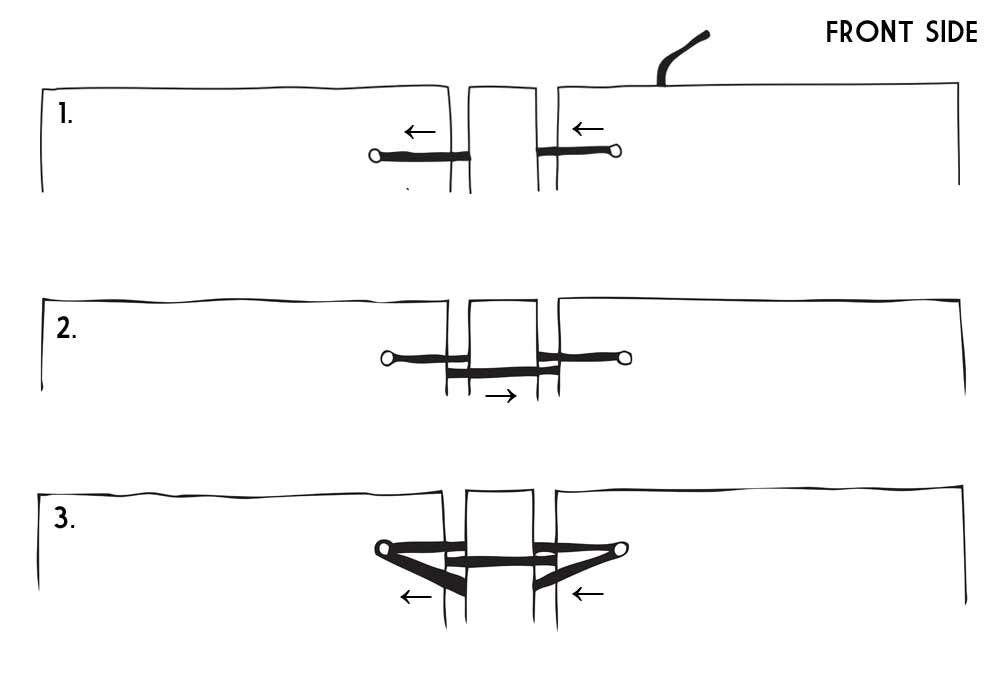 Tighten the threads and knot at both ends, bring the knot into the hole. Cut off any excess thread. Repeat the steps for sewing for the remainder sewing stations. Remember to tighten as you go and bring the knots into the holes.
Tighten the threads and knot at both ends, bring the knot into the hole. Cut off any excess thread. Repeat the steps for sewing for the remainder sewing stations. Remember to tighten as you go and bring the knots into the holes.
Here’s an illustration of how to tie the knot on either end of the sewing station. To pull the knot tight, pull the thread parallel to the sewing or perpendicular to the spine.
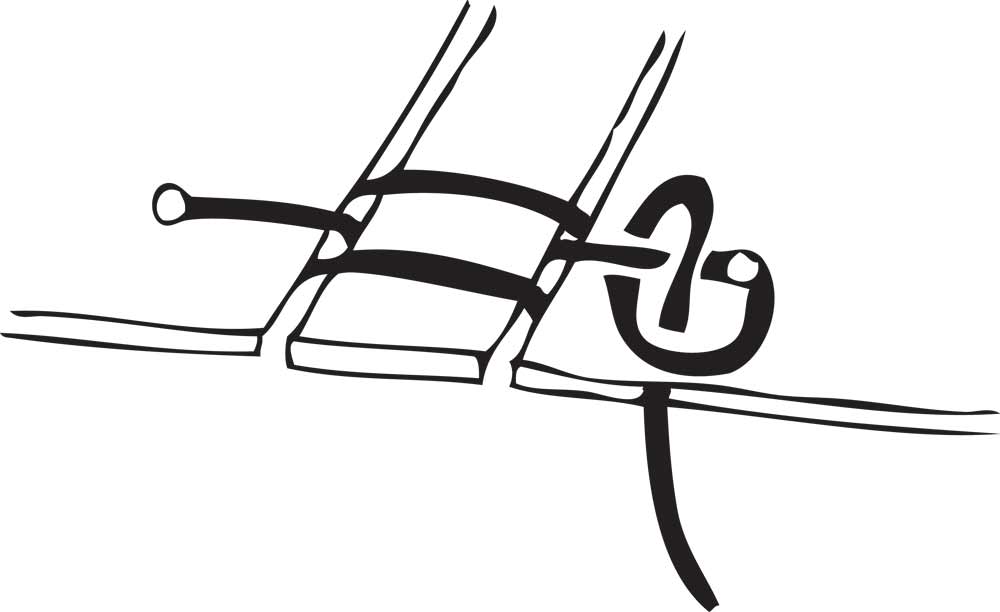
STEP FIVE:
Grab a thin bristol stock like 10pt. museum board or something similar to cover weight and cut it down slightly smaller than the paste down. Using a sanding block, give all four sides a cushioned bevel down to nothing. Glue down the infill with PVA. Glue down the paste down with PVA. Put the entire case under weight until dry.
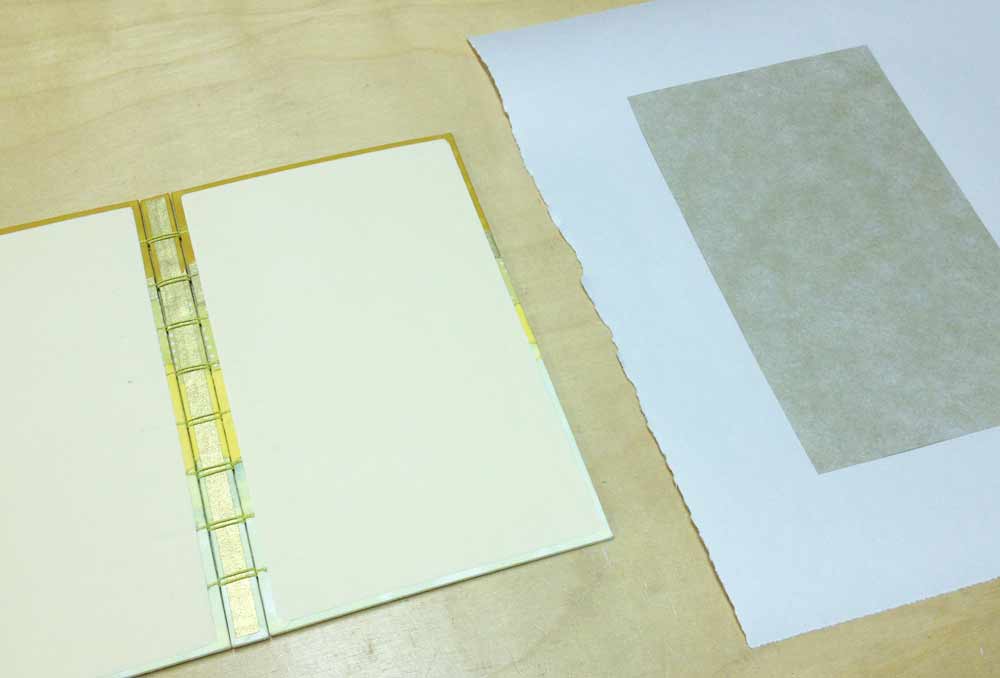
STEP SIX:
Using the same punching jig, mark the height of the signature on the jig centered between the holes. Punch holes in your signatures.
STEP SEVEN:
Get ready to sew in the text block. Grab the case, text block, some thread, a needle and wax. Wax the thread 1-2 times and thread the needle.
Okay, this part can be a bit tricky, too. Start by entering your first signature from the outside at the tail. Come out the next hole; slide the needle under the four adjacent threads along the spine piece. Then re-enter the signature. Continue this action for the rest of the signature.
When you get to the end, pull the thread at both ends to tighten. Attach the next signature by entering from the outside at the head. Sew all along, catching the threads at the spine piece. When you are ready to tighten, position the spine of the second signature flat against the spine piece, tighten and finish off with a kettle stitch. Add the remaining signatures, remember to tighten with the signature flat against the spine piece. Finish off the last signature with a double kettle stitch.
Ta-da! You have just finished the Top Secret Belgian binding. You now know the truth behind this simple structure.
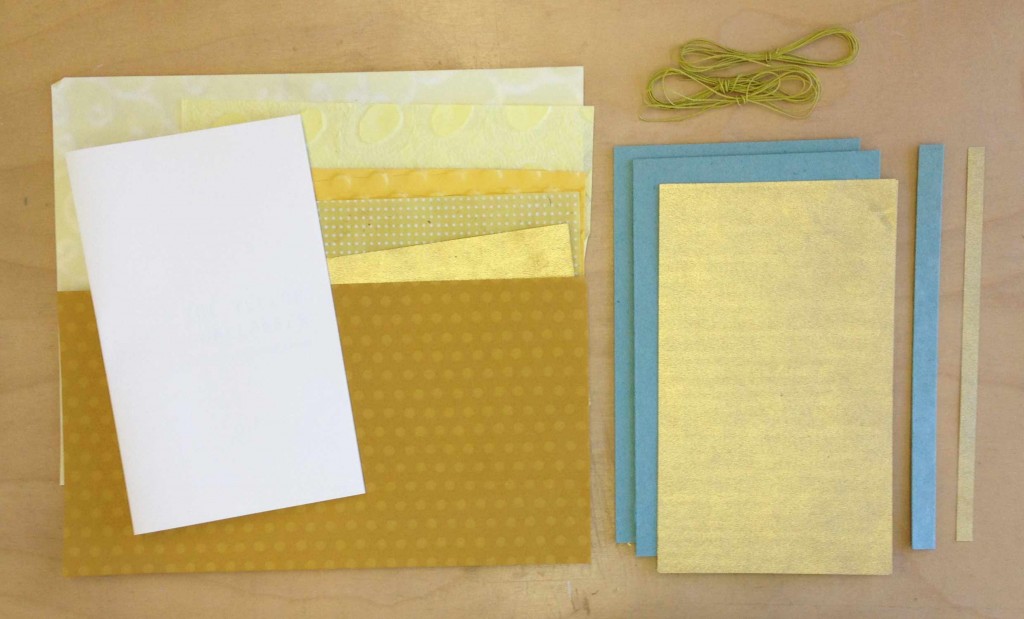
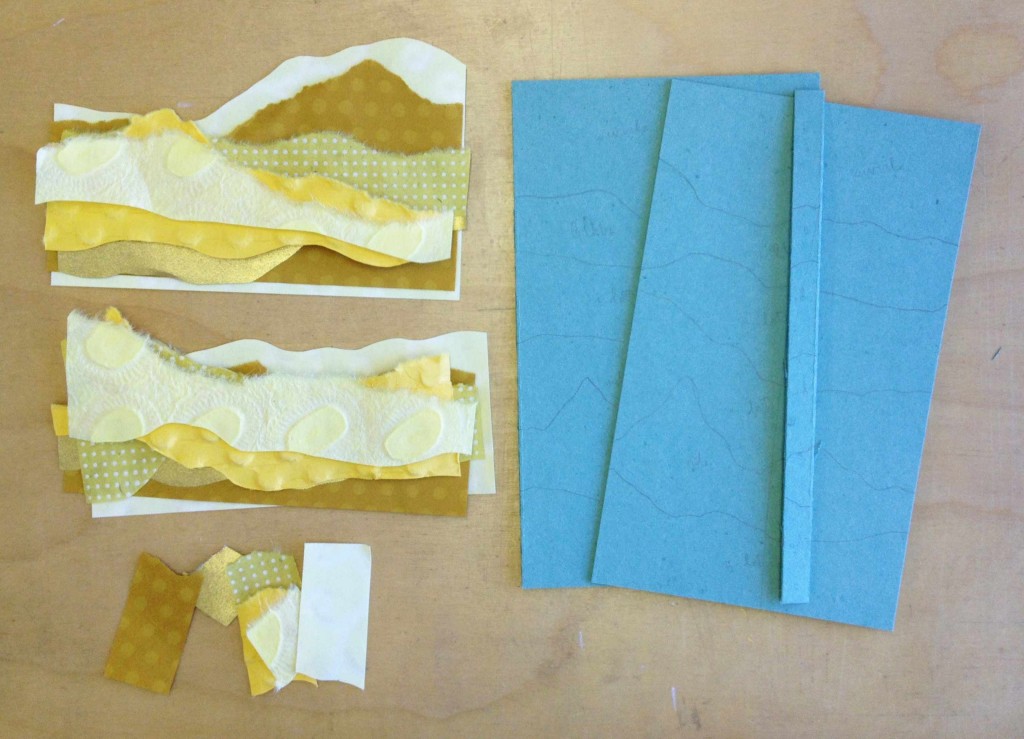
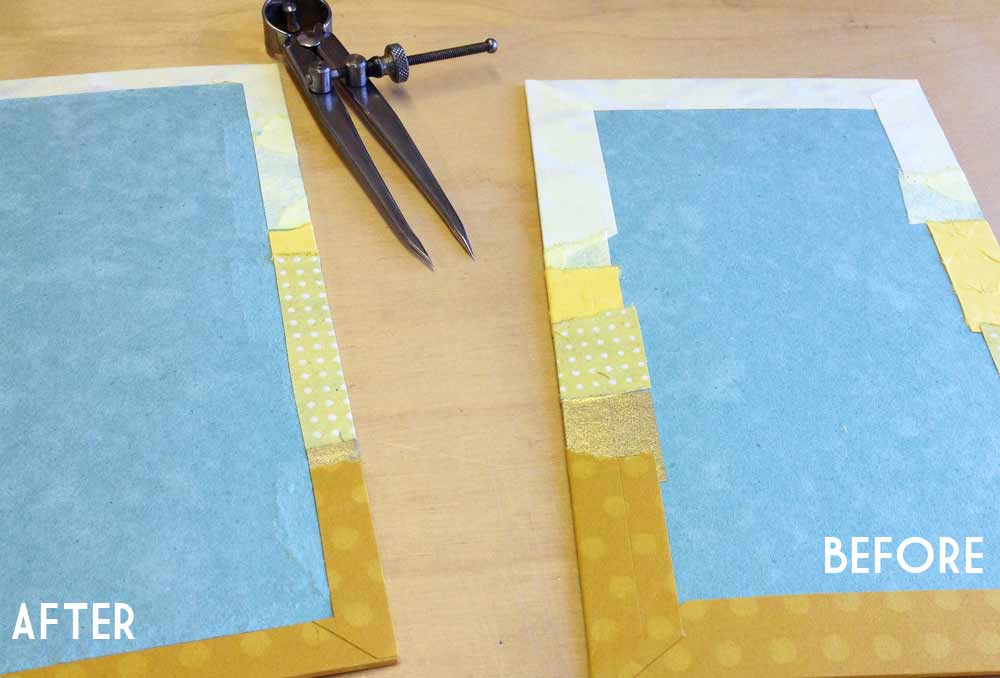
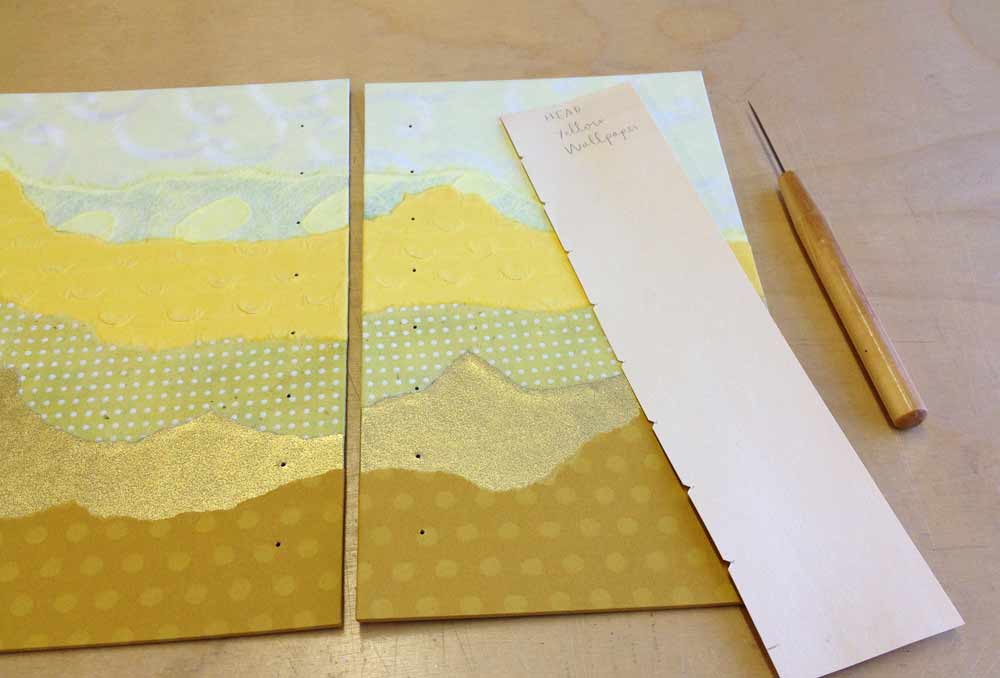
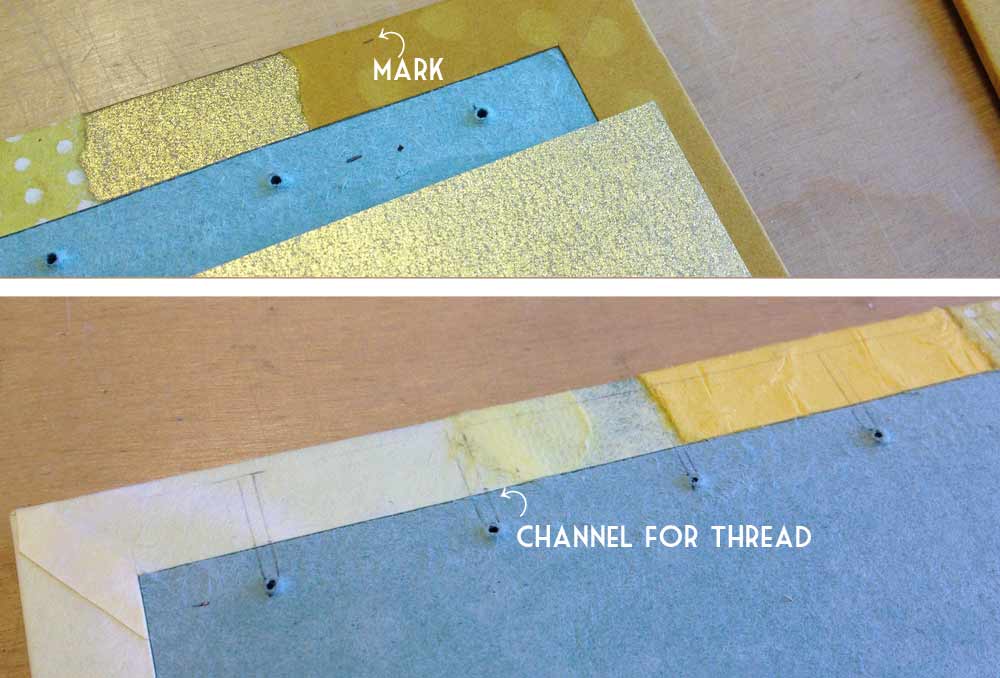
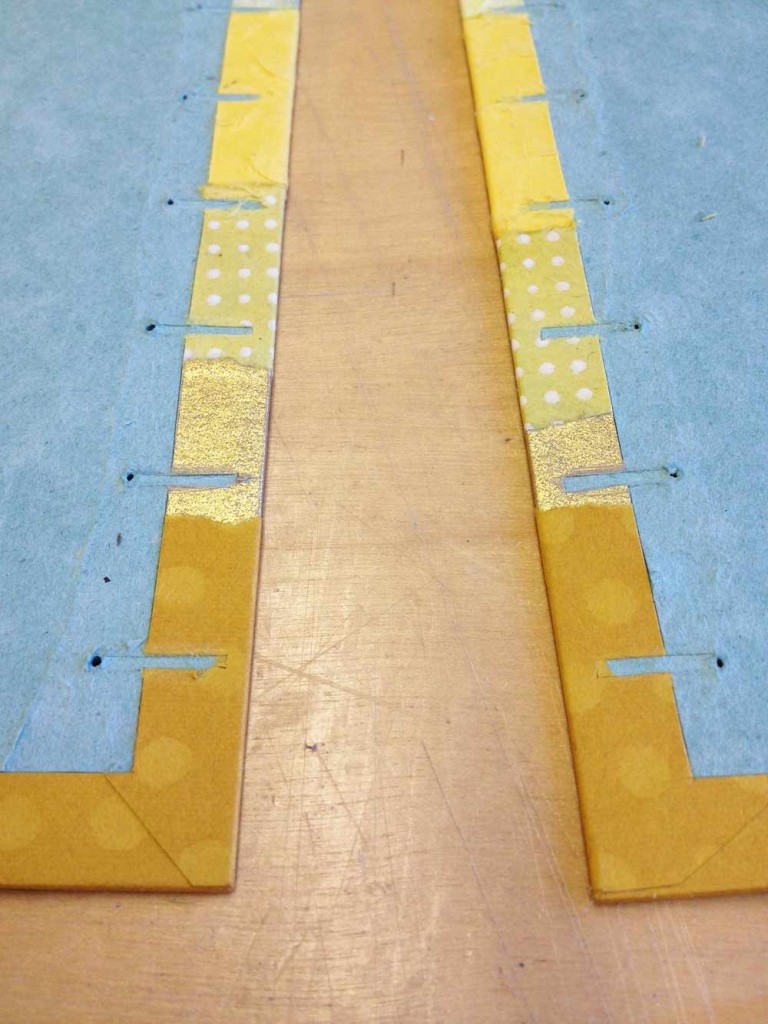
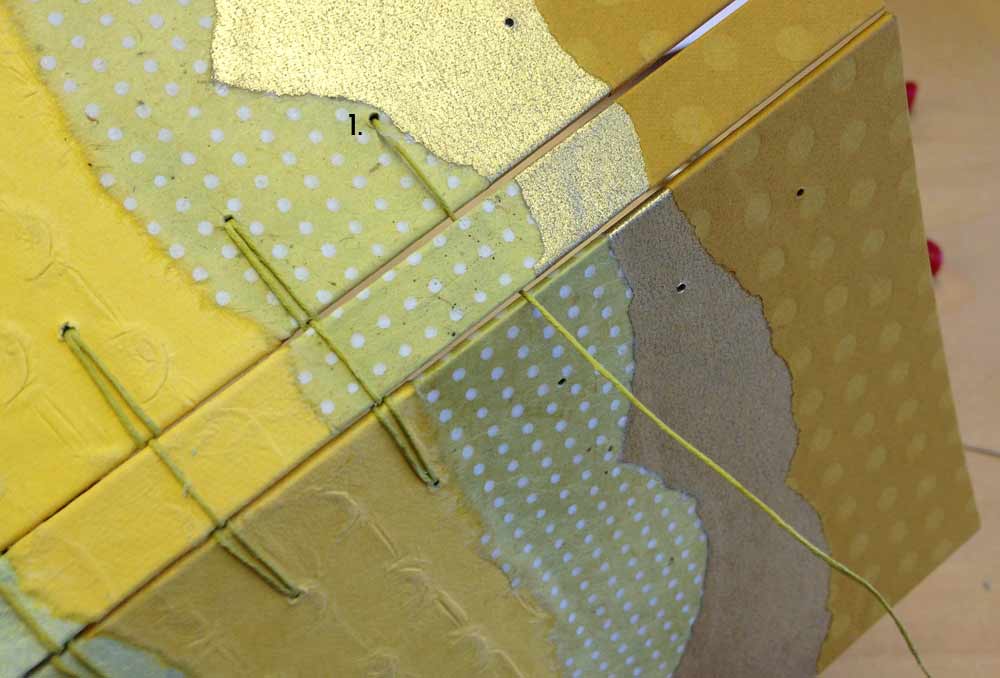
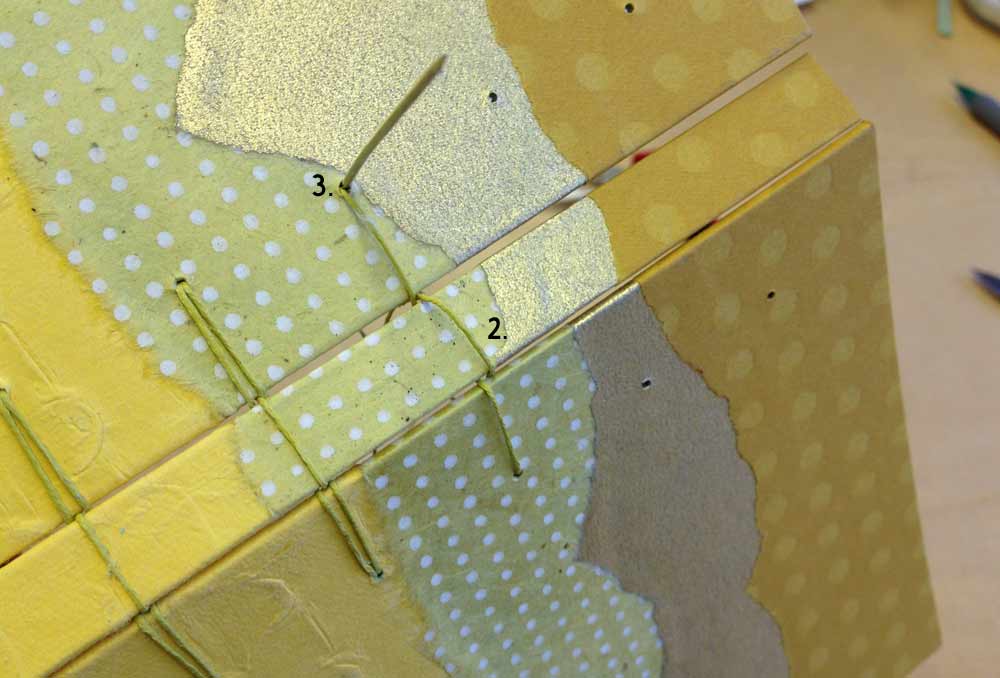
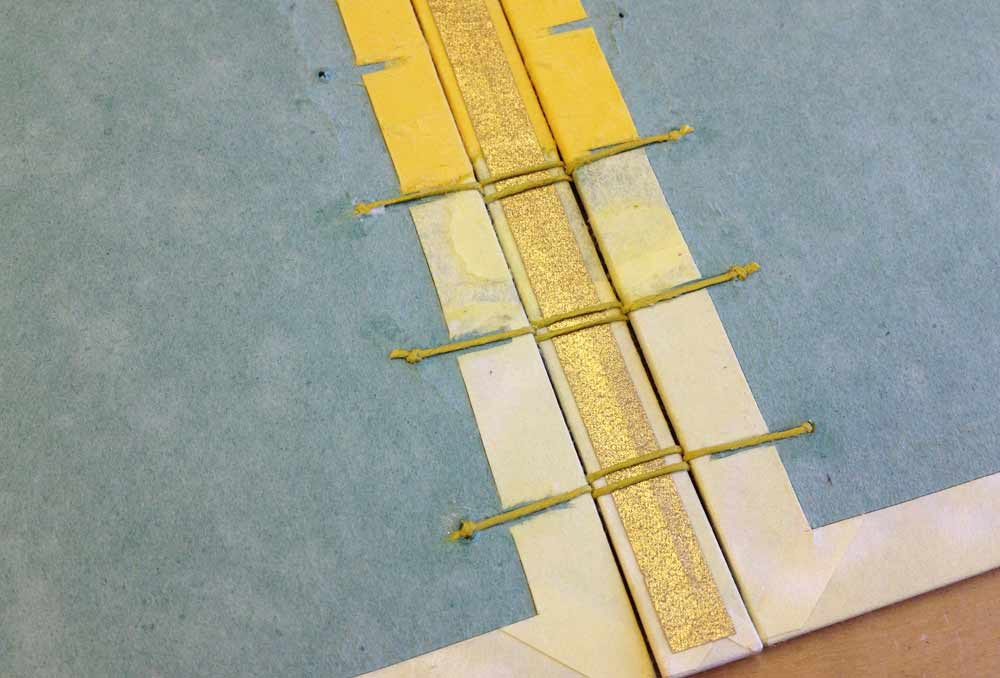
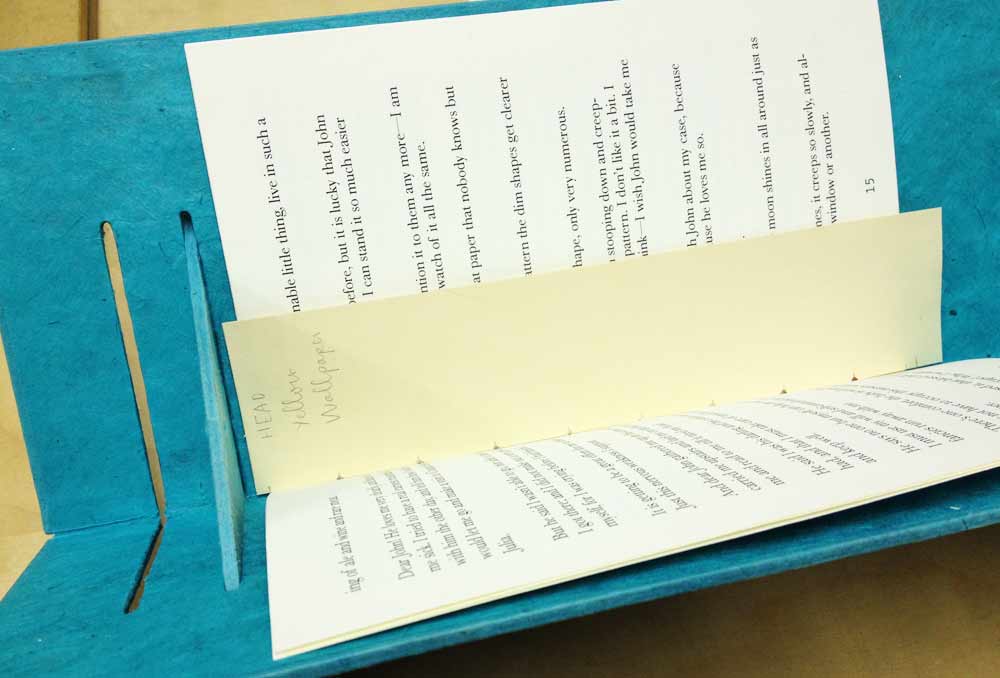
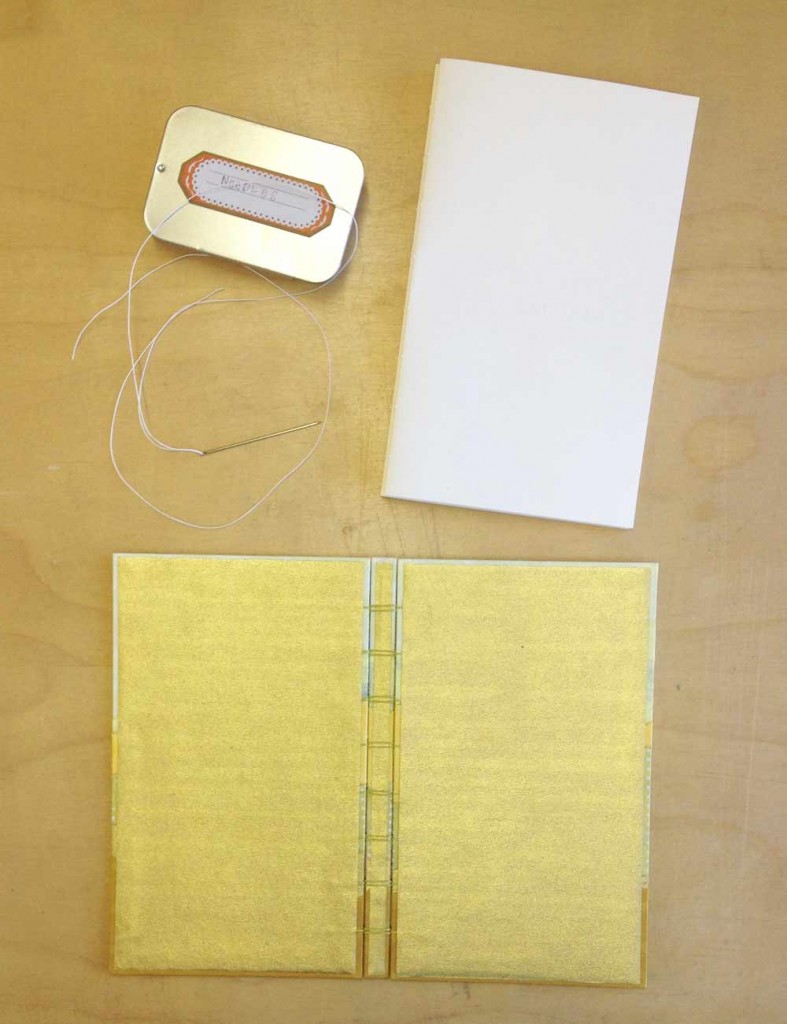
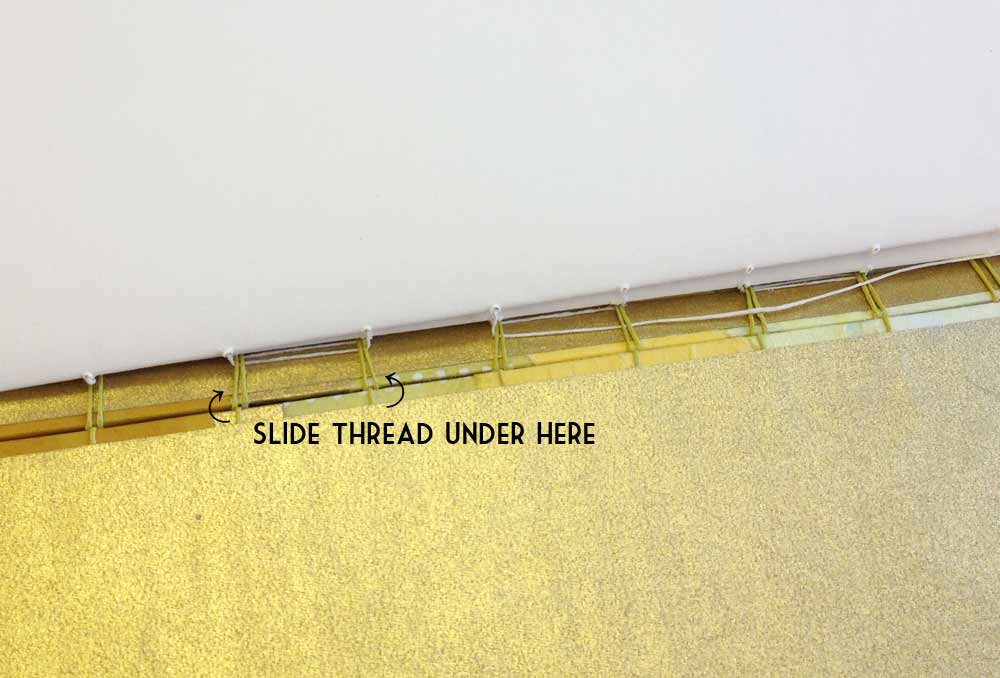
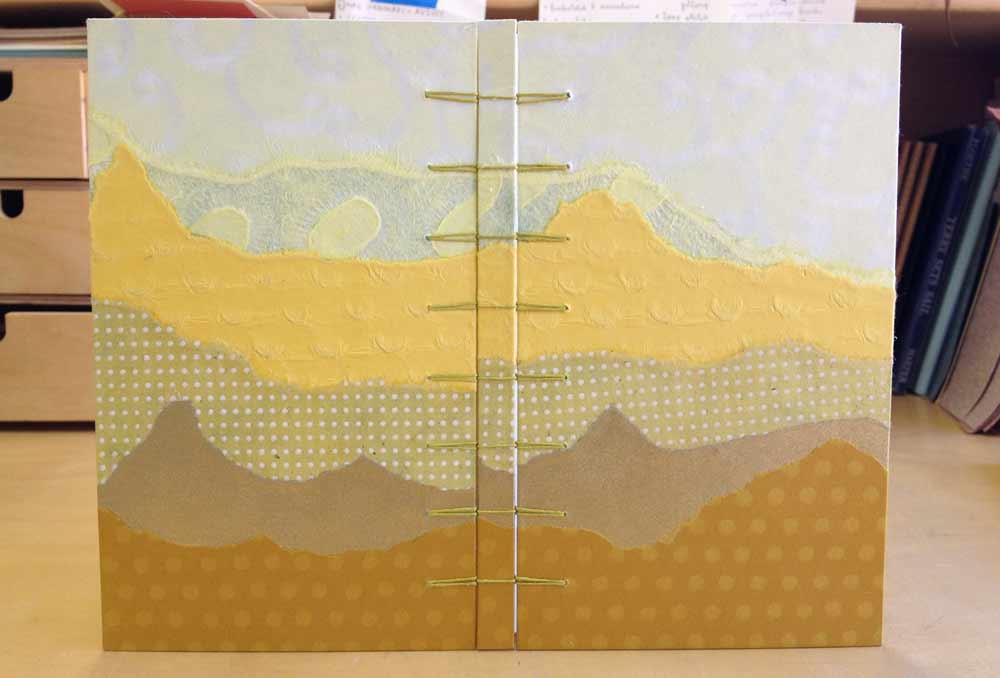

I have done a few of these bindings, but was putting the cover on the inside before sewing the boards. The stitching on the boards were visible. This is much better and the channeling for the thread makes so much sense. Cannot wait to start my next book!
This is a very inspiring tutorial for me. Thank you!
(And the book is beautiful also!)
Very clear instructions! Thank you. The book is beautiful
Hello Erin!
A fantastic tutorial, thanks for taking the time to make it. Just a quick one to let you know that I’ve added your tutorial as a resource in our latest ‘Top 10 Secret Belgian Binding Tutorials – http://www.ibookbinding.com/blog/top-10-secret-belgian-binding-tutorials/
Thanks again and keep up the good work!
~ Paul
Thanks so much Paul! I’m honored to be on a list with so many other fantastic binders and institutions.
[…] View tutorial on Herringbone Bindery […]
[…] method here on Hollanders: http://www.hollanders.com/secret-belgian-binding or Herringbone Bindery: https://www.herringbonebindery.com/blog/2013/11/19/tutorial-top-secret-belgian-binding/ which has a few differences, including suggesting the inner covers go in after the binding – […]
[…] de juiste maat gesneden. De kaft weef je als het ware aan elkaar doormiddel van het draad. Op dit BLOG staat heel duidelijk aangegeven hoe je dit moet doen. Ik denk dat je hier het beste op kunt kijken. […]
This is the best tutorial for this binding I have seen on the web! Thank you for going to the effort to share your knowledge and skills with us.
[…] tutorial by Erin Fletcher for the Top Secret Belgian Binding (do you know why it’s considered a secret?) is designed for any skill […]